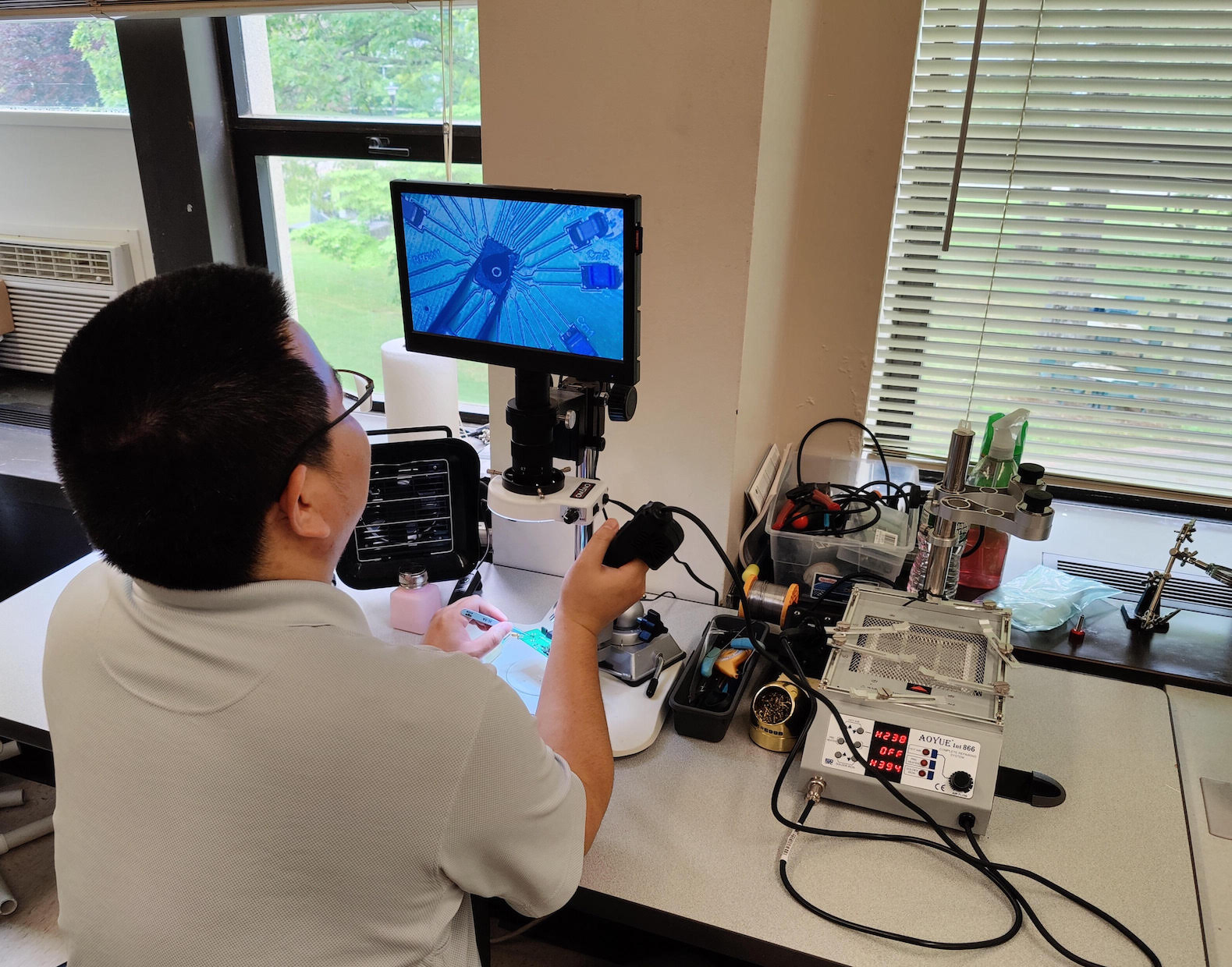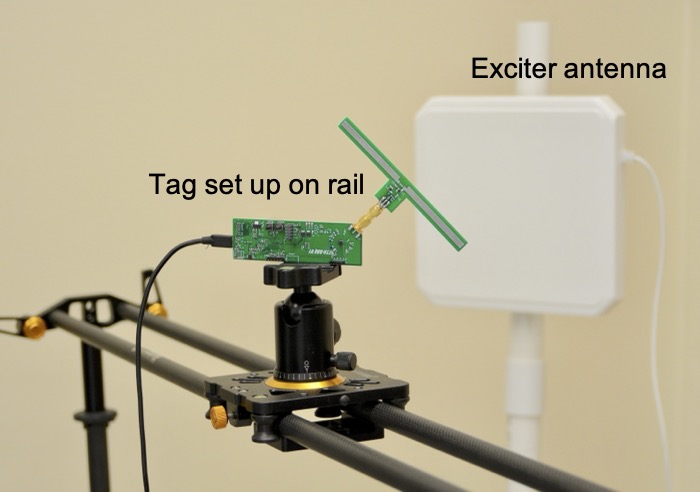RF-based Analytics with Intelligent Backscattering RF Tags
 |
| PhD student, Yang Xie, preparing the RF tag for testing |
To fully unlock the potential of the Internet-of-Things (IoT), novel sensing and energy harvesting solutions are needed. Prof. Milutin Stanacevic and a team of Stony Brook researchers he leads are developing RF (radio frequency)-based sensing technology to cyber-enable (i.e. computerize) our physical environment. The technology is based on the tiny battery-less RF tags attached to objects or integrated into structures. These RF tags will be able to sense activities and interactions among various entities around them, both tagged and not-tagged. This enables applications such as fine grain tracking of human movements, activity and gesture recognition, human-object interactions and structure monitoring. These capabilities in turn will provide an ability to query and reason about the environment in order to infer a wide range of analytic information. All of this will be achieved without the occupants (humans) within the environment having to carry or wear any devices (device free).
While conventional RFID systems offer low energy cost communication on the side of RFID tags, the presence of an RFID reader limits the application of such systems beyond identification due to the high cost, low scalability and low granularity. Recently, tag-to-tag communication based on backscattering of ambient RF energy or a RF continuous wave signal from a dedicated exciter (i.e. RF source) has been established as an enabling technology for eliminating RFID readers from a network of RF tags. As the tags are tiny, inexpensive and passive and communicate directly with each other without a centralized active reader, they can be truly pervasive and the network of tag can become a part of the physical environment without requiring any additional infrastructure to operate. For granular and long-term monitoring, RF sensing has to be integrated in these miniature, self-powered tags.
The team’s invention, a passive tag-to-tag channel estimation algorithm, leads to a new leap in such tag technologies by providing them with the ability to “fingerprint” their surroundings and hence serve as a signature of specific activities in the proximity of the tags. Such RF processing was previously limited to high-power radios (e.g., WiFi) that are capable of active IQ demodulation to extract wireless channel characteristics that these techniques depend on. The uniqueness of the Stony Brook approach brings this technique to a near zero power regime so that they can be deployed over RF-powered tags that we assume will be pervasive in the future. The network of such RF tags naturally leads to a vast number of RF links in a physical space providing a much richer granularity and redundancy for activity recognition than competing technologies.
Wireless channel estimation, in addition to enhancing the performance of a communication link, offers a sensing modality that is amenable to monitoring the surrounding environment. The team devised a technique that enables tags to estimate the RF parameters of the wireless channel between pairs of communicating tags without the use of IQ demodulation. The proposed technique isolates the amplitude and phase of the tag-to-tag channel, leading to amplitude and phase estimates that are independent of the position of the exciter. As the analog-to-digital conversion of the envelope of the received backscatter signal is the only additional component for the tag with the RF sensing capability, the power consumption stays in the range of a self-powered device.
 |
| Discrete implementation of an RF tag used in the experiments |
How did the Stony Brook team originate this idea? They previously worked on enhancing the tag-to-tag communication link and while doing the experiments, noticed that even a small movement around the tags, like typing on a keyboard a few meters away, affected the communication channel. That led the team to think about how to estimate the tag-to-tag channel.
This is a joint project between faculty at the Department of Electrical and Computer Engineering and Computer Science at Stony Brook, M. Stanacevic, P. Djuric, S. Das and A. Athalye. External collaborators include Z. Haas from University of Texas at Dallas (networking) and B. Glisic from Princeton University (structural health monitoring). Currently, the following students from the ECE department work on this project: Xiao Sha, Puyang Zheng, Dyumaan Arvind and Yang Xie. The project students from the ECE department that graduated are Yasha Karimi (Iota Biosciences) and Yuanfei Huang (Qualcomm).
The students involved work on the development of a cutting-edge technology across the design stack layers, from devices, circuits, system architecture to algorithms and applications. This provides them a unique perspective and experience.
The team intends to pursue commercialization of the proposed technology and they hope to see the first prototypes deployed in real-world demonstration within two to three years. There is a patent pending for the proposed technique.
The research is funded by three National Science Foundation grants that cover different design aspects and applications of the technology.
